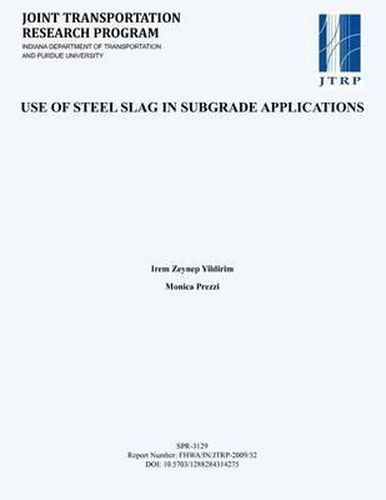Readings Newsletter
Become a Readings Member to make your shopping experience even easier.
Sign in or sign up for free!
You’re not far away from qualifying for FREE standard shipping within Australia
You’ve qualified for FREE standard shipping within Australia
The cart is loading…






Steel slag is a by-product of steelmaking and refining processes. In 2006, 10-15 million metric ton of steel slag was generated in the U.S. Out of the total steel slag produced in the U.S. every year, about 50-70% is used as aggregate for road and pavement construction and approximately 15-40% is stockpiled in steel plants and eventually landfilled at slag disposal sites. Since current levels of steel slag stockpiling and landfilling are not sustainable, alternative geotechnical engineering applications for steel slag are being explored to alleviate the slag disposal problem and to help save dwindling natural resources. The main objectives of this research were to determine the geotechnical engineering properties of two types of steel slag generated from different steelmaking operations and to assess their potential use in subgrade stabilization and embankment construction. Samples of fresh and aged basic-oxygen-furnace (BOF) slag and of fresh electric-arc-furnace-ladle (EAF(L)) slag were characterized through a series of laboratory tests (specific gravity, grain-size analysis, X-ray diffraction, compaction, maximum and minimum density, large-scale direct shear, consolidated drained triaxial and swelling tests).
$9.00 standard shipping within Australia
FREE standard shipping within Australia for orders over $100.00
Express & International shipping calculated at checkout
Steel slag is a by-product of steelmaking and refining processes. In 2006, 10-15 million metric ton of steel slag was generated in the U.S. Out of the total steel slag produced in the U.S. every year, about 50-70% is used as aggregate for road and pavement construction and approximately 15-40% is stockpiled in steel plants and eventually landfilled at slag disposal sites. Since current levels of steel slag stockpiling and landfilling are not sustainable, alternative geotechnical engineering applications for steel slag are being explored to alleviate the slag disposal problem and to help save dwindling natural resources. The main objectives of this research were to determine the geotechnical engineering properties of two types of steel slag generated from different steelmaking operations and to assess their potential use in subgrade stabilization and embankment construction. Samples of fresh and aged basic-oxygen-furnace (BOF) slag and of fresh electric-arc-furnace-ladle (EAF(L)) slag were characterized through a series of laboratory tests (specific gravity, grain-size analysis, X-ray diffraction, compaction, maximum and minimum density, large-scale direct shear, consolidated drained triaxial and swelling tests).